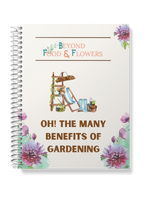Meal Planning Basics: Use the Happy Hassle Free Way
What’s for dinner? meal planning basics

Is this the image that comes to mind when you think about planning Dinner?
What if feeding your family was really this pleasant? What if you didn’t have to lose your mind every night and what if I told you that you could save a ton of money at the same time? Would you think I was crazy? Meal planning has been a love it or hate it kind of thing for a while, but you don’t have to be extreme to get some peace and save some money. Happy meal planning basics are right here.
When my children were small, I was in college studying science. The mornings were full of lectures and then afternoon labs often ran until supper time. I still had to pick the children up at daycare or school and drive an hour home before I could even start to get supper. We were all tired and, more often than not, we would stop and eat out or pick up a pizza to take home. While we have many fond memories of spreading a red-checked table cloth on the living room floor and eating our pizza picnic style, I definitely did not have the money to be buying take-out.
My sweet parents bought me a Crock Pot and that did help but I was not always organized enough to get it going in the morning rush. Getting three young children out the door by 6:30 or 7:00 a.m. takes some work. This was all in the days before web browsing and the easy access of information. Back then you either figured it out or you didn’t. Most of the time I didn’t. Sometimes bills went unpaid because I had wasted money on quick meals. I tried to feed my little family healthy food. We ate what I thought were a lot of fruits and vegetables. Still, tuna noodle casserole with cranberry sauce frequently graced the table. There isn’t anything wrong with tuna casserole and there are plenty of healthy variations but pasta five nights a week gets old.

TAKE BACK YOUR VITALITY!
Learn more about the health benefits of gardening and get some good tips and instruction too.
Eventually I caught on to the concept of planning ahead before shopping and how that could save me money. When I had a relatively free day (do busy moms ever have a free day?) I could make something a little more time consuming and freeze half of it to pull out later. Hint: that’s one of the secrets of saving money. Over the years I gathered more information and tried different methods of planning ahead. In this post I will cover some of the meal planning basics that actually worked and didn’t add to my stress level.
Gather some supplies
First find a notebook or journal that will last a long time. Why? Because meal planning basics are just that, basic. This is where you will begin your own unique plans and the great part is your work is reusable. That’s right! You can keep your meal plans and reuse them as often as you want. There is no need to reinvent the wheel every single week or month. You just need something to write on. You could keep a digital file but I find tangible pen and paper works best for me. It will still be a benefit to have a list of favorites somewhere easily accessible.
The Family Dollar Store has some great and inexpensive journals and notebooks.
The idea is to get something that will inspire you. Feeding your family is a monumental task and doing it well will bring them and you blessing.
You will need some pens of different colors to list meals and mark them with characteristics like “quick and easy” or “great for company” or “pot-luck dish”.
Check out what you already have, and make note of what needs to be used first.
Last, have your local sales flyer handy or know where you can shop for the best basics. Basics are things like flour or meats.
Once you have your journal or notebook and some inspiring pens, find a convenient time and spot. Set aside about an hour or so for your first brainstorming session. If your are really crunched for time take it in smaller pieces. Yes, this can be done between other tasks. I do recommend you get someplace quiet though. Remember the picture at the top of this post? This is supposed to be life affirming work not drudgery. Using some classical music for studying in the background can stimulate your brain to relax and think creatively.
Develop your core list
Write a list of meals you already often eat. Don’t worry if it’s healthy or meeting your future goals. Just quickly jot down as many different suppers as you can think of.
Next: on a separate page list a few ideas for company. These should include one or two ideas for what to serve unexpected guests with what you might already have on hand.
Now mark or highlight meals according to category. This is where you might use designations like “quick and easy” or “Mary’s favorite” or “easy to double and freeze”
If you get “brain block” don’t worry, just keep the notebook handy and jot down more ideas as they flow.
Check your pantry
Check your refrigerator and cupboards for food you have on hand and especially for items needing to be used soon. What meals can you make without even going to the store? I hope to write a post soon about keeping a foundational stock pantry so more on that later. For now think about what resources you already have. Take a moment to practice thankfulness for what is already there.
Work in small blocks
Now that you have some basic meal planning tools, it’s time to start planning. If looking at a whole week is overwhelming, break it into chunks. You can either plan a whole week of all three meals plus snacks, or just dinner. Don’t stress. Take it easy and make this something to look forward to.
Fist mark off any meals where you already plan to eat away from home.
Next think about which days are especially busy and which days might allow some extra cooking. Don’t forget to add in special days like birthdays.
I like to focus on the main meal of the day. I intentionally plan left overs for lunches and I don’t have small children to feed before school. These are things to think about though.
Starting the week with a big meal
I’m pretty old school when it comes to Sunday dinner. I’ve always made a special dinner on Sunday. During tough times it might not have looked like too much but it was always the most involved meal of the week. Some people like to make the biggest meal Saturday evening to leave Sunday more restful. Whatever works for you is fine.
Starting my week with a large meal means I have left-overs to utilize through the week. The Sunday meal kind of sets the theme for the rest of the week. It takes a lot of the thought work out and doesn’t have to mean a repetitious litany of dinners.
For instance, if I serve a roast chicken on Sunday I can used shredded chicken in other dishes later. I can make chicken broth to use for lentil soup or chicken noodle soup with homemade noodles. The shredded chicken can be seasoned with Mexican spices or added to an Asian themed stir-fry. Roast beef or pork has many options as well.
The big meal start to the week is especially useful when life is overflowing with busy. It gets most of the work and clean up done in one day.
Involve the family
I can’t encourage this too much. You are not the sole provider for food in your household (unless of course you live alone). Get everyone on board. Ask people what they want to eat. Give the children some input. This is a great opportunity to teach basics of nutrition. Involve the children in more than just picking out what to eat. Let them be involved in the cooking process. Yes, it will be more work at first but children learn quickly and are more apt to try new foods if they have taken part in the preparation. It’s never too early to start teaching meal planning basics and cooking skills. Even a little one in the highchair can take a few stirs at something in the bowl.
relax!
Remember this is supposed to be helpful. Just start with some meal planning basics and grow as works for you and your family. There is no “right” way to do this. It’s all about you and your family. Eventually you will find it’s quicker to have food planned at home than to wait in line eating out. You will have healthier meals and find that home-cooked meals taste amazing at a fraction of the cost of letting someone else do it for you.
Stay tuned for real food meal plans that don’t require big box stores or hard to find ingredients. These are based on frugal living in rural areas.
Meanwhile, get your favorite beverage and a comfy place to brainstorm. Oh, if you find yourself saving money, put it aside for something special.
I welcome your comments. Did this help? Did it not help? How did it go?




It’s hard to imagine how much effort it took to plan meals when you couldn’t just look up millions of recipes any time you wanted.
It was simpler then. No one was expecting a variety of international cuisine every night. That’s one reason why I think having a go-to list of meals is important. Is saves looking through millions of recipes. I know I get caught up in that sometimes.